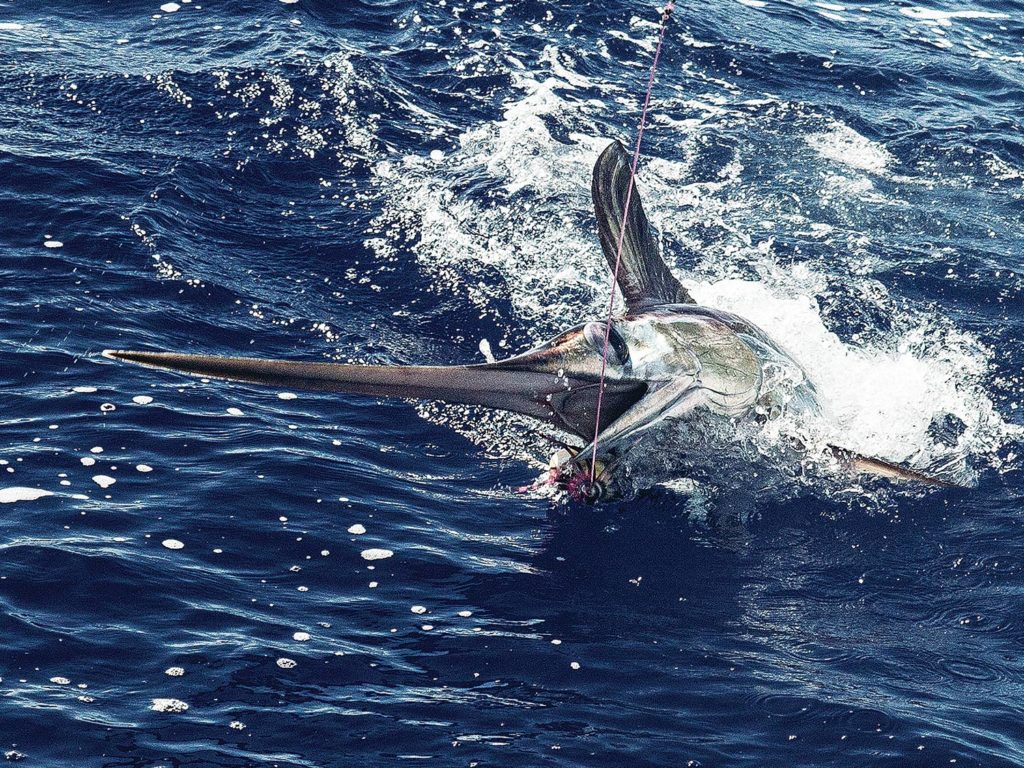
The first time that charter captain Mark Hoos took customers on a daytime swordfish trip aboard his 58-foot custom Carolina, Marli, out of Ocean City, Maryland, in fall 2018, they hooked a 424-pounder four minutes into the first drift and boated it. On subsequent trips, Marli’s crew averaged eight sword bites a day—and caught some bigeye tuna along with them.
“It’s been an untapped fishery,” Hoos says of the daytime swordfishing in his local waters. “It has definitely extended our season. Usually our offshore action peters out in October, but now we’re fishing through Thanksgiving.”
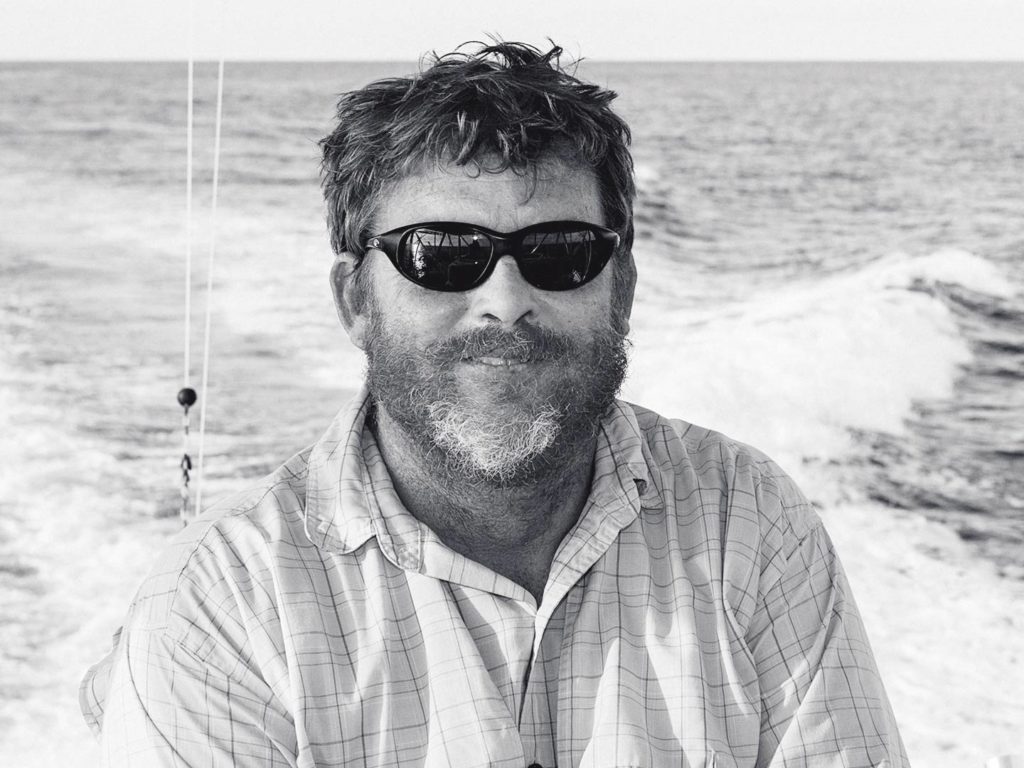
That same scenario is repeating all along the mid- and southern Atlantic coasts, from Maryland to Virginia Beach, Virginia, down through the Carolinas and northern Florida. While dropping baits to the bottom at high noon to catch swordfish was unthinkable 20 years ago, the North Atlantic stock of these world-traveling predators has been rebuilt under careful US and international management. With so many more fish available, the South Florida debut of day-dropping more than two decades ago has since burgeoned into a robust recreational and charter fishery along the East Coast that’s hooking more enthusiastic participants with each passing season.
“I’ve been fishing for daytime swordfish for only about a year,” says Capt. Fin Gaddy, whose charter boat, Qualifier, is based out of North Carolina’s Oregon Inlet Fishing Center—a popular destination for anglers throughout the mid-Atlantic region. “I’m winging it, and although I feel like we’ve been relatively successful, I also have so much more to learn. It’s my bucket-list thing—I really love doing it. It’s a brand-new challenge.”
Gaddy, his former mate Nathan Walker of Virginia Beach, and Hoos all say they learned from the successes of day-dropping pioneers such as the Stanczyk family—operators of Bud n’ Mary’s Marina in Islamorada in the Florida Keys—as well as Fort Lauderdale-area tackle-shop owner and video producer RJ Boyle, and the Stanczyks’ friend and colleague Vic Gaspeny, who once held the unofficial record for the most swords caught on consecutive trips. Now these mid-Atlantic pioneers have made this fishery their own, adapting Florida techniques successfully enough to score consistent catches in their home waters.
Adapt and Overcome
Mid-Atlantic fishermen generally pursue swords off what’s known as the bank—the north-south edge of the continental shelf—at depths ranging from 900 to 1,400 feet and between 45 and 65 miles offshore. Gaddy patrols the waters off the Outer Banks, marking the schools of bait that congregate around the rolling humps and sharp drop-offs. When he spots a promising target area on the sounder, he bumps Qualifier out of gear and uses his chart plotter to gauge the speed and direction the boat is drifting. Allowing for current speed, direction and wind, he sets up an upwind, up-current drift, then stops the boat and drops the bait in the water. He reports that this is easier to do than in the Florida Straits, where the Gulf Stream roars north at more than 5 miles per hour. Off the Carolinas, the Gulf Stream veers east, so Gaddy often finds himself fishing in little to no current at all. “It’s all about finding productive bottom structure and bait first,” he says.
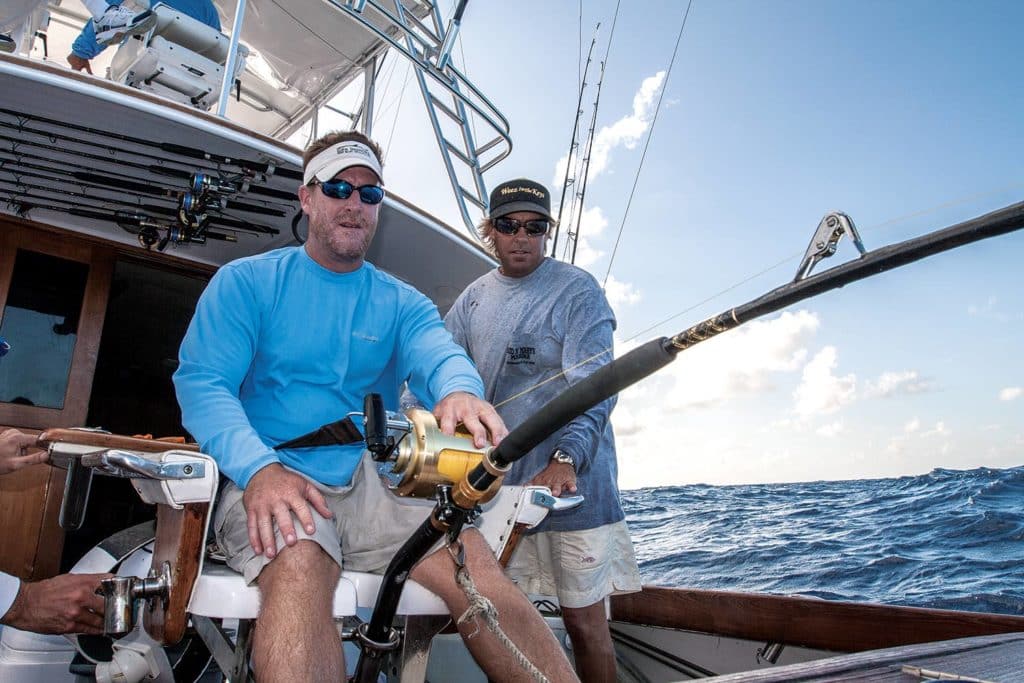
The Setup
Most swordfishermen use the same basic setup, though each might put his own individual twist on the rig: the tip, or gunwale rod, is usually a stout 5- to 6-foot, light-/medium-action rod with a soft tip, filled with around 900 yards of 65- to 100-pound braid on either a Lindgren-Pitman electric reel or an 80-pound-class conventional reel with an electric-assist capability like those produced by Hooker Electric. The braid is connected to approximately 100 feet of 250-pound monofilament wind-on leader by a loop-to-loop connection using a Bimini twist. A floss loop tied to the wind-on about 20 feet from that connection has a small longline clip that is attached to about 5 feet of 80-pound monofilament with a 5- to 10-pound weight, depending on the amount of current. The tag end of the wind-on holds two underwater lights, about 20 feet apart, whose rings are attached to the line by rubber bands. Preferred light colors vary by boat.
Watch: Learn to rig a weight system for deep dropping.
Below the second light, a stout ball-bearing swivel connects the wind-on to about 8 feet of 200- to 300-pound mono crimped to the hook. Popular baits include a stitched belly strip; a skirted, single-hooked fresh squid or eel (available through Baitmasters and other bait retailers); or a skirted, soft-plastic Hogy lure, which resembles an eel but is more durable than the real thing and can withstand attacks by hordes of squid. Skirts are used to protect the baits from repeated slashes by a swordfish’s bill.
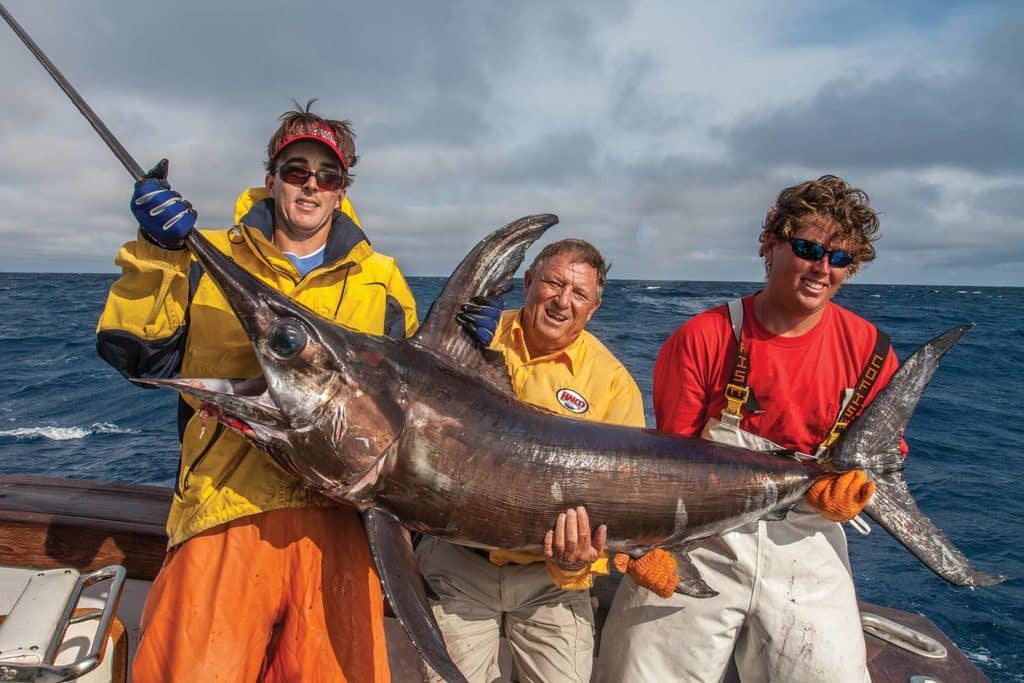
Gaddy fishes with a single rod in a gunwale holder unless he calculates he’ll get a longer drift. That’s when he deploys a buoy rod from the stern that holds the bait well off the bottom and away from the boat so that it doesn’t have to be tended constantly.
When he feels like he’s in the zone, Gaddy stops the boat and drops the bait slowly, using a line counter on the reel and stopping the descent occasionally to make sure everything remains untangled. When the weight hits the bottom, he cranks it up about 70 feet or so, and it’s ready to fish. If the line goes slack while it’s being dropped, that’s a bite, Gaddy says. If the bait doesn’t get hit on the way down, he drifts, bumping the boat in and out of gear and using a trolling valve to control his speed, all with the aim of keeping the fishing line straight up and down in the water column.
“A swordfish bite does not show aggressively on the rod tip. we crank it away from them, then drop it back. Sometimes you have to drop it back three or four times before they come tight on it.”
Mark Hoos
Light Bites
The bite of a huge daytime swordfish in the depths is, counterintuitively, very light. The angler might see the rod tip barely twitch a mere half-inch, even though a 400-pounder has just inhaled the bait. Sometimes they just whack it with their bill. The buoy rod bite is a bit more obvious: The float tends to lay over on its side.
“A swordfish bite does not show aggressively on the rod tip,” Hoos says. “We crank it away from them, then drop it back. Sometimes you have to drop it back three or four times before they come tight on it. Don’t forget that you probably have more than a thousand feet of line in the water.”
Now that he’s day-dropping more frequently, Hoos is also happy with the bycatch, which is often a hefty bigeye tuna. He said it’s easy to tell the bigeye bite from the sword. “They bow the rod over and take off,” Hoos says. “You definitely know it’s a tuna at that point.”
As in South Florida, there are different techniques for approaching the battle with a deep swordfish. Some anglers just want to catch them as quickly as possible by pressing the button on the electric reel, although they still have to remember not to push when the fish is taking drag. Others insist on hand-cranking them all the way up from the bottom, and still others use a reel with the electric-assist feature until they’ve recovered all but the wind-on, then hand-crank the fish the rest of the way to the surface. And of course, no fish caught using an electrically powered reel is eligible for IGFA world-record certification.
“Boating a frisky daytime swordfish can be sporty because these gladiators never quit—even after a battle from 1,500 feet down all the way up to the surface that might last minutes or hours.”
Sue Cocking
Closing the Deal
Boating a frisky daytime swordfish can be sporty because these gladiators never quit—even after a battle from 1,500 feet down all the way up to the surface that might last minutes or hours. To improve the odds boatside, Gaddy employs a harpoon along with a low-drag poly ball, lots of line, and two 8-foot fiberglass gaffs. Remember that IGFA rules also do not allow harpoons to be used on prospective world-record fish of any species.
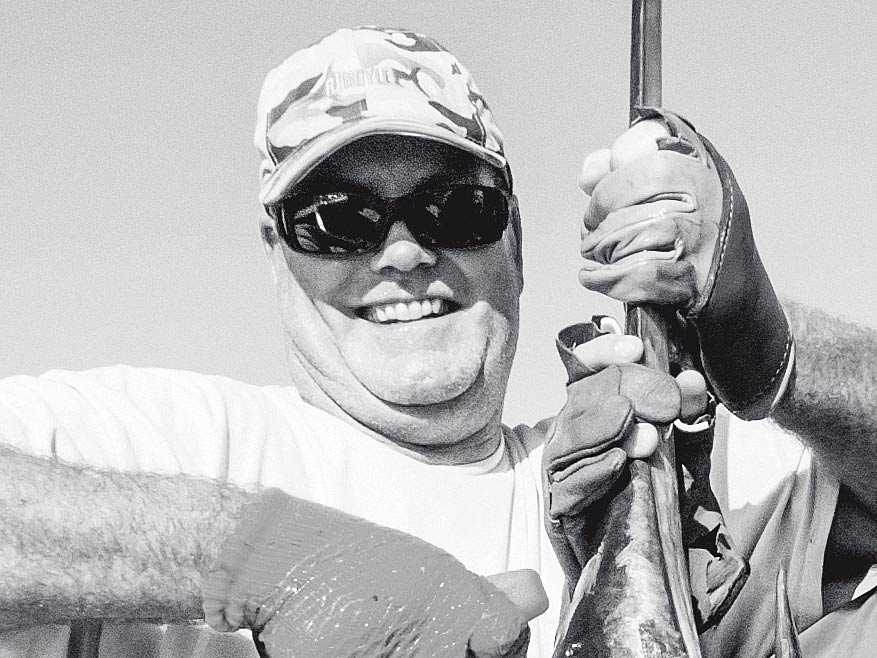
When the fish is on the surface, the skipper keeps the boat in gear while a crewmember quickly removes the weight from the line and maintains tension on the leader, easing up the fish using the wind-on—not taking wraps around his hand. When the fish is close enough, the crewmember sticks it in the body with the harpoon. Tied to the harpoon is 600 feet of line coiled neatly in a milk crate, with two more long sections of line at the ready. Gaddy clips a low-drag poly ball to the end of the harpoon line, and it’s ready to go.
Once the fish is at the boat, a crewmember sticks it in the head with the 8-foot gaff. If he loses the gaff, there’s another one ready. The gaffed fish is then led around to the stern, pulled through the transom door and placed in a 40-by-90-inch tuna blanket packed with ice, which is folded and secured with Velcro strips for the ride back to the dock.
Read Next: The Bonito Taco is one of the most durable swordfish baits. Learn to rig it here.
A Bright Future
In November 2019, Justin Wilson, owner of the Oceans East tackle shop in Virginia Beach sponsored that state’s first-ever swordfish tournament out of Rudee Inlet. From November 4-30, a fleet of 29 boats scored 120 hookups, caught 50 (33 releases, 17 harvested), and also boated eight bigeye tuna. Hoos is more than happy to target swordfish before and after Ocean City’s mahi and white marlin have gone south for the winter. And, according to Scott Lenox, a Maryland representative on the Mid-Atlantic Fishery Management Council: “It’s a brand-new fishery.”







